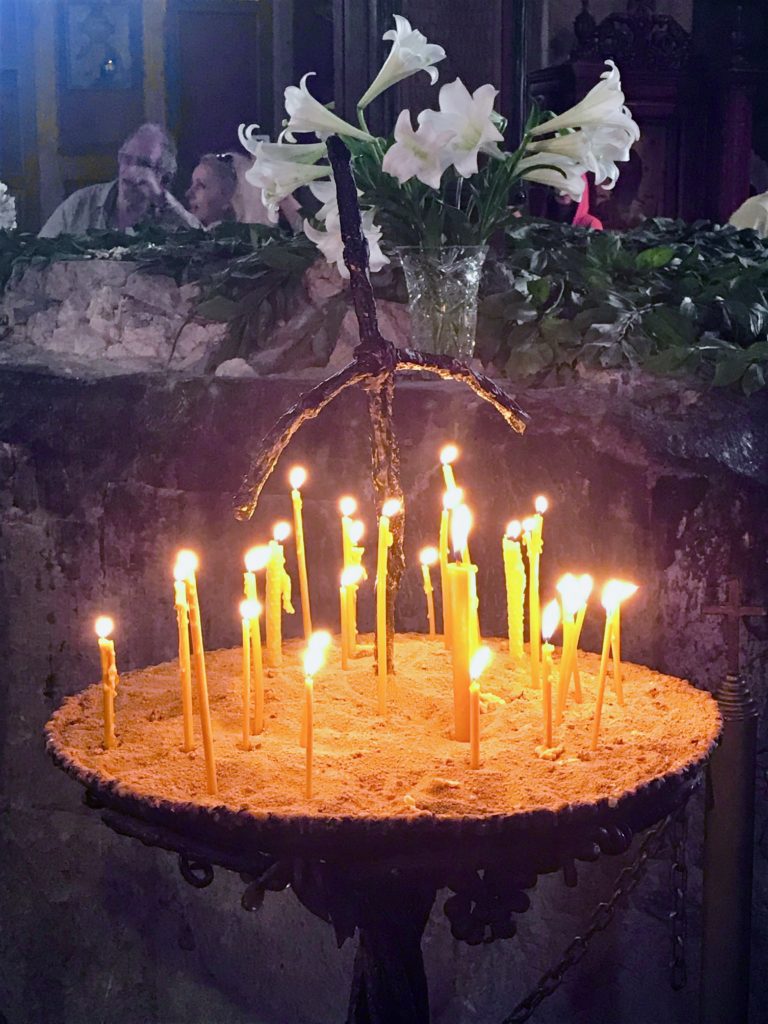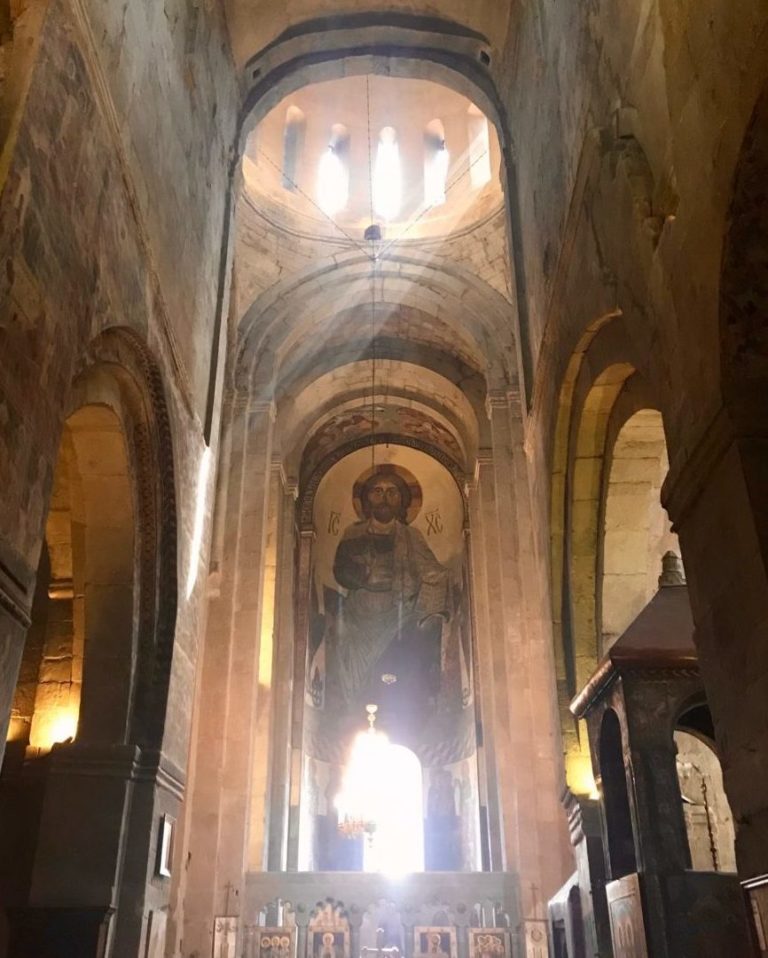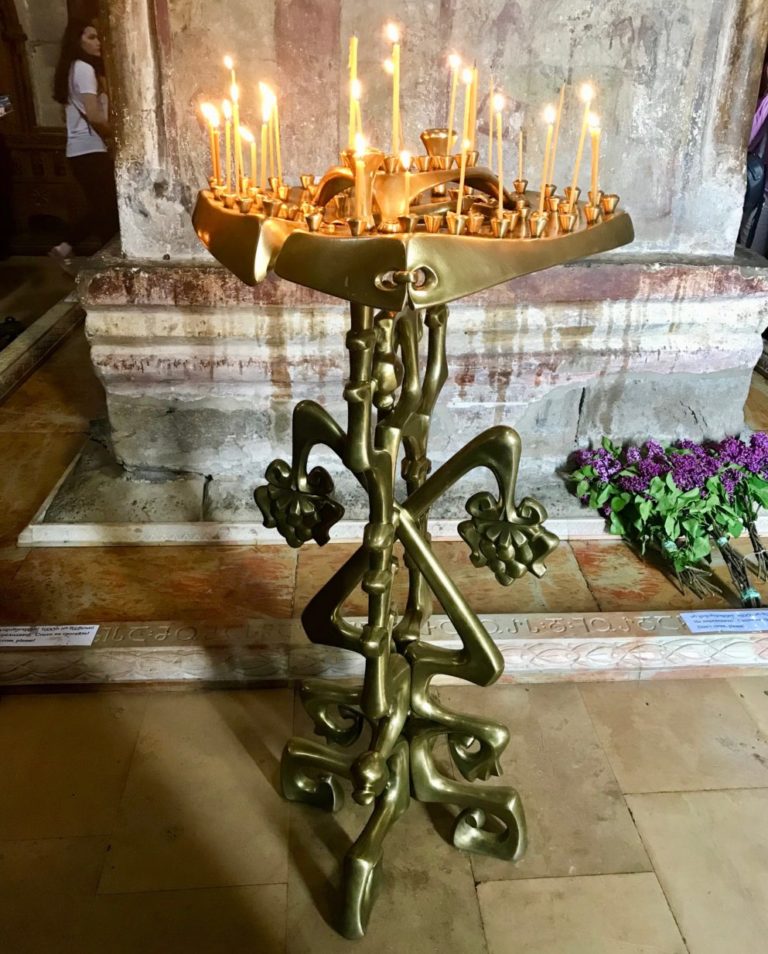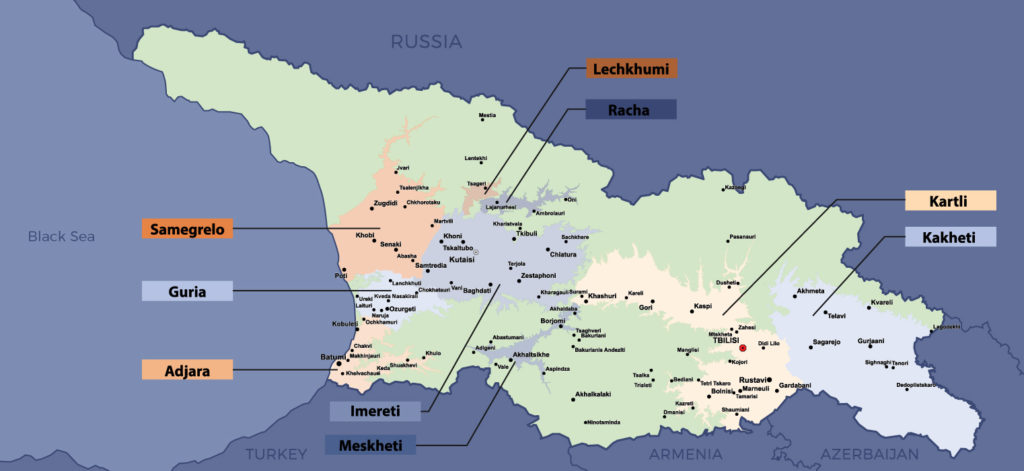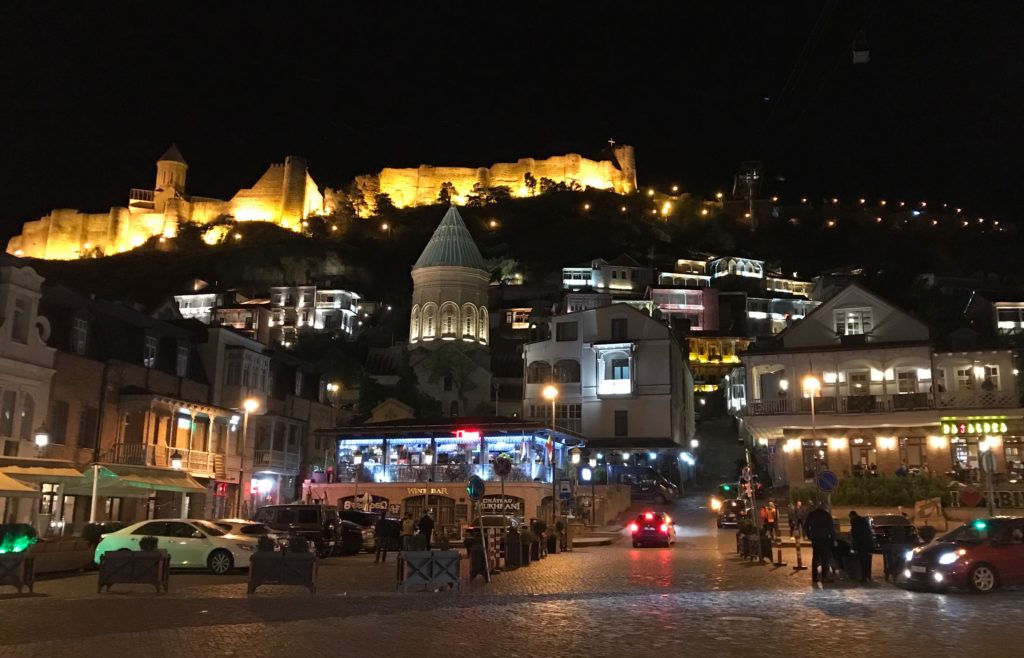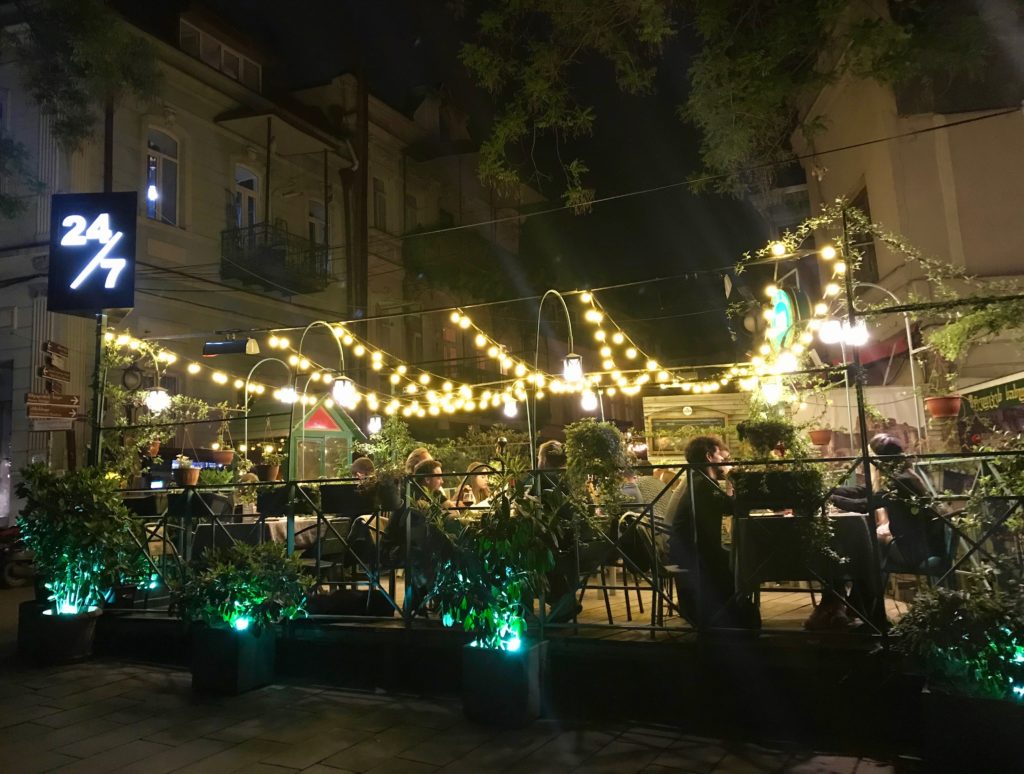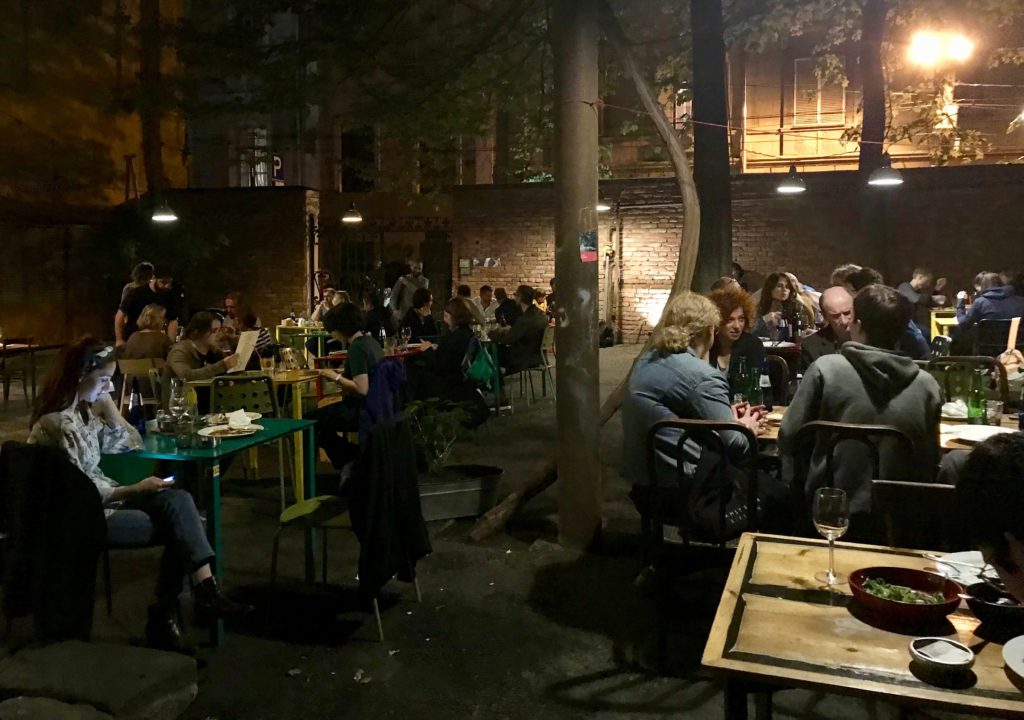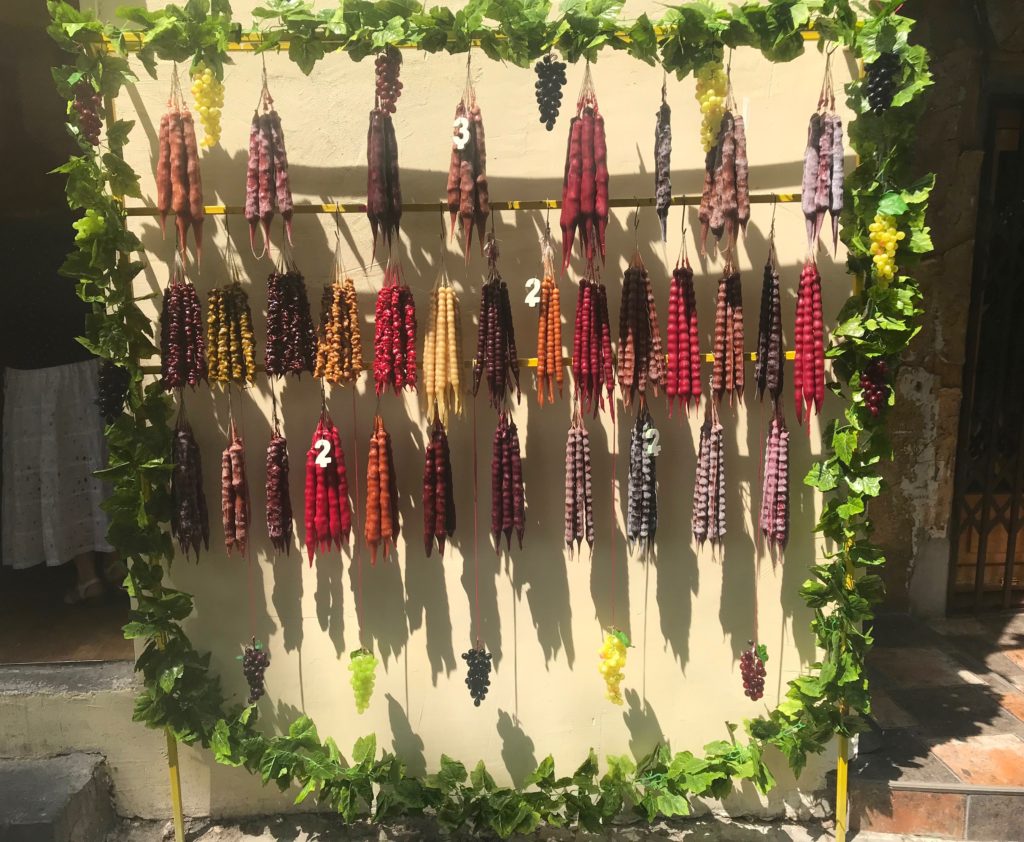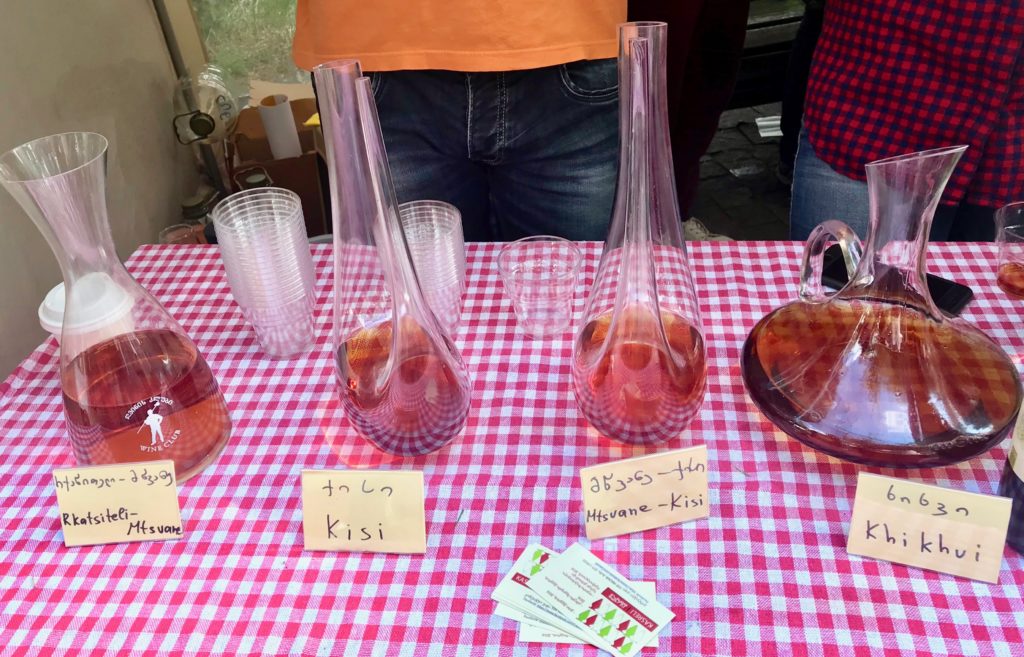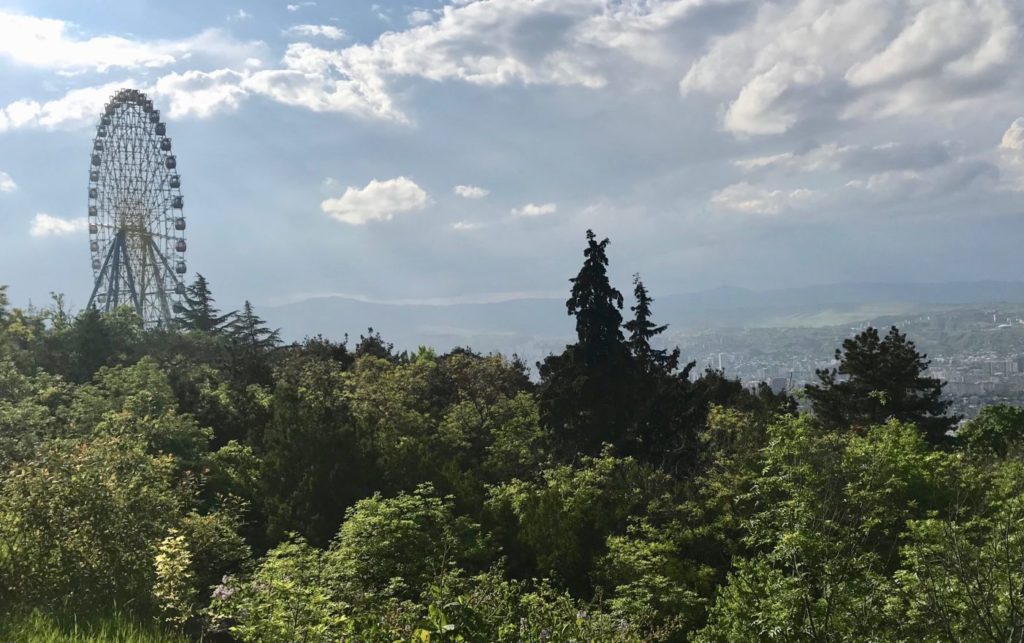The Qvevri Wine Tradition of Georgia
Where is Georgia?
Serving as a crucial bridge between Asia and Europe, Georgia’s geography is extremely important in shaping this small country’s unique identity. Blanketing the Caucasus mountains, time has woven Georgia (called Sakartvelo, locally) a diverse fabric of mixed cultures, religions and traditions. Overtime, these have melded together to embody present day Georgia; however the battle scars from countless invasions are still evident.
Ever imposing Russia resides to its north, while the Caspian Sea rests on its west coast. Its southern border meets Turkey, Armenia and Azerbaijan, three ancient and intriguing lands. The nearly 4 million residents are concentrated in the middle valley between the upper Caucasus Mountains in the north and the lesser Caucasus to the south.
History of Georgia
Georgia has arguably the longest known wine producing history on earth. Perhaps unsurprisingly, it is also home to 526 known native grapes. With evidence of winemaking dating back over eight thousand years, there are few traditions more storied and significant to Georgia and its welcoming people.
As with many countries, wine is closely tied to religious ceremonies and traditions. Georgia is no different. The first apostles to begin spreading Christianity in Georgia are said to have done so in the first century A.D. However, Christianity wasn’t officially declared until 330 A.D. when Saint Nino from Cappadocia came and converted King Marin. Her tremendous influence can still be seen throughout the church today. Famously, she made a crooked cross from grape vines tied together with her own hair, symbolizing a religion of and for the people. Wine, seen as Christ’s blood, and the sacred grapevine, have been synonymous with the Orthodox Georgian Church ever since.
After a brief period of religious autonomy, Georgia was heavily invaded between the 5th and 12th centuries. Georgians lived entangled in a constant battle to preserve Christianity and resist the Islamic teachings of Persia. It was during this upheaval that King Dachi of Iberia moved the original capital city of Mtskheta, to a more defendable Tbilisi, about 30 minutes away.
Wine cellars or “Marani” in Georgian, played an important role in communities during this period. Cellars are where underground baptisms and religious ceremonies had to take place in secrecy. Conversely, wine itself had to be made outside, in qvevri hidden within dense forests, as Muslim religion forbids alcohol. Qvevri (clay vessels) themselves have also been used to make wine above ground for thousands of years. Georgians started making and burying larger qvevri for stability purposes and accidentally discovered the natural refrigeration the earth provided. The egg shape has also been proven to be excellent for fermentation and natural gas dispersion. Additionally, qvevri underground benefit from a pointier bottom, thereby minimizing wine contact with the sediment and allowing for more quality wine.
Fortunately, between the 11th and 12th centuries, King Davit the Builder managed to expel the Turks, unify church leadership and establish a Georgian army. The next period is referred to as Georgia’s Golden Age, which happened under its only female King, Tamar. The daughter of King George, Tamar ruled with her father for 6 years until she took over on her own at 24 years old. From 1184 to 1213 she led the country to become the most powerful in the Eurasia zone, successfully defending itself against invaders. Unfortunately this only lasted until the early 14th century when Mongols moved in effectively destroying everything in their path.
With most cities and agricultural businesses decimated, Georgia was propelled into economic crisis which led to its division into three kingdoms of Kartli, Kakheti and Imerti. Lacking power, in 1783 King Erekle II was forced to make a pact with Russia, in an attempt to protect his people and Christianity. It was quickly evident that Russia wouldn’t simply watch over Georgia as agreed, and in 1891 they fully annexed the distraught nation. The ensuing oppression aimed to eradicate Georgian culture, beliefs and traditions from the world, physically erasing any and all representation they could.
The twentieth century provided a short stint of autonomy for Georgia from 1917 to 1921, in which it was internationally recognized as an independent Democratic Republic from 1920-1921. Unfortunately, the Soviet Union invaded Tbilisi and reclaimed Georgia as one of its republics in 1921 and maintained their tight grip until 1991.
Finally, Georgia reclaimed their independence through a 1991 referendum and democratic election that followed. The external and internal conflicts however, did not end there. Their first President, extreme nationalist Zviad Gamsakhurdia, was ousted within a year and the political situation has continued down an unstable path since.
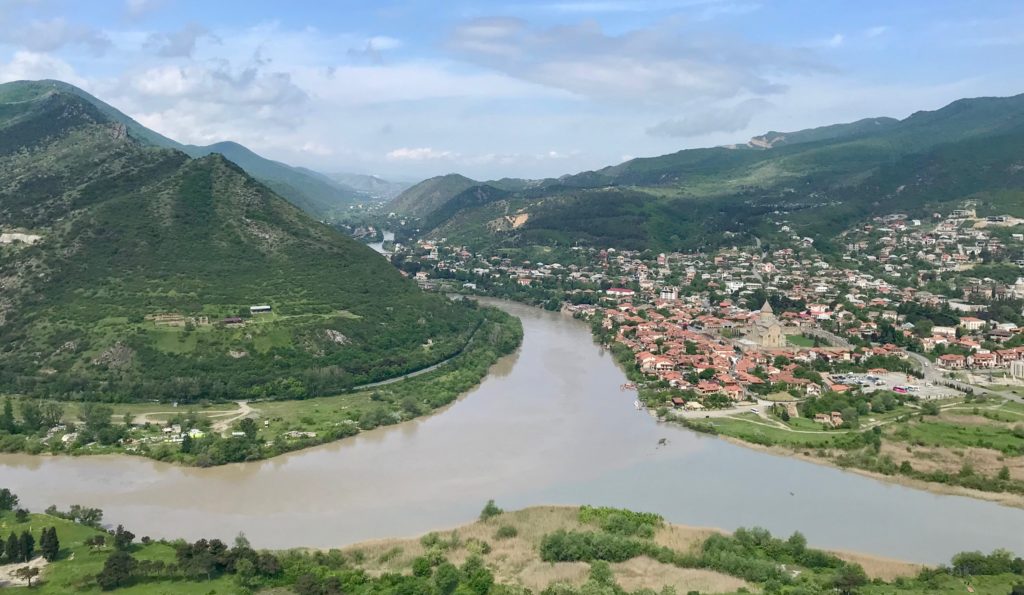
The eastern region of Kakheti contains 14 of the 18 official wine appellations. For this reason, I chose to use the regions of Georgia as guideposts, rather than the wine appellations themselves. Not only are the majority of the appellations in only one region, but many of them are based on foreign varietals or sweet wine styles. From my experience, the nine geographic regions and/or specific villages are more likely what you will see on wine labels today.
Kartli
Kartli is home to the capital Tbilisi, and is one of the most interesting and under the radar wine destinations. While the vast majority of large scale wine is made in Kakheti, Kartli has a lot to offer small production, natural wine enthusiasts. Wineries can also be reached in under an hour from Tbilsi.
One of the modern pioneers of traditional Georgian winemaking is that of Iago Bitarishvili who produces about five thousand bottles of traditional qvevri wines in Kartli’s Mukhran Valley. Iago and his wife Marina have paved the way for a new generation of Georgian winemakers to turn their attention to quality over quantity. In 2005, Iago was the first Bio or Organically certified vineyard in Georgia, setting an important example for all winemakers around him. Today, Marina also makes her own small line of excellent Mtsvane qveveri white wine.
Another great example of Kartli’s spirit comes from Andro Barnovi of Wine Artisan’s collective. A former politician, Andro returned to his roots to help home wine producers turn their craft into something they can share with the global wine community. Andro started this journey publicly in 2008, while still holding government office in the Georgian Department of Defense. He began spearheading wine event organization and supporting small producer initiatives, all in an attempt to breathe new life into the artisanal sector. Today they make amber, rose and red wines you can read more about in my forthcoming article on Wine Artisan’s.
Kakheti
The most famous region producing 70% of Georgia’s wine is the eastern most zone of Kakheti. The volume is however misleading, as most of this is sweet or semi-sweet bulk wine for the Russian market. Abundant sunshine and favorable landscapes allow wine factories to pump out wine with only profit in mind. Recently, independent winemakers have been bottling their authentic wines from this region, challenging the status quo.
Lagazi is an example of a great young producer making top natural wines, the traditional way. Shota Lagazidze does 5-7 month skin macerated mono-varietal bottlings of Tsitska, Mtsvane and Rkatsiteli whites, all equally excellent and pure. Thankfully, a growing foreign demand for organic wines has also convinced some large conventional producers to start organic lines themselves. Both native and foreign grapes are permitted in the appellations, widely ranging from Rkatsiteli to Cabernet Sauvignon.
Imereti
In the western central area of Georgia lies the cooler Imereti region. With higher acidity and historically shorter macerations and/or lower percentages of skin contact, these wines can be nuanced and elegant. More locally renowned than internationally known, Imereti is gaining a following in the natural wine community.
Baia’s Wine is partially to thank for the recent praise and recognition echoing amongst global wine drinkers. Baia’s native whites and reds are made by Baia Abuladze, who in 2015 gave new life to her family’s old vineyard. Today, at only 26, she and her sister now export 90% of their fantastic wines which typically have only 30% skin maceration. My favorite is probably the Tsitska, Tsolikouri, and Krakhuna white blend.
Racha
Just north of Imereti, in central west Georgia, Racha is a small mountainous region producing some of the most dynamic wines in the country. High elevations provide profound acidity and aromatics not found in many other areas. Spanning the Rioni River Valley, Racha has varied microclimates and a milder temperature than you’d expect for an area with between 500 and 2,000 meters of elevation.
Giorgi Kipiani from Didgori Winemaking is producing excellent 6 month macerated Tsolikouri here in the town of Khvanchkara. Under 30 years old, Giorgi has also made a name for himself with his 3 dry native reds, Sakipiano (blend), Kabistoni (aka Aleksandrouli) and Dzelshavi. These are in contrast to the sweet reds of the Soviet era. Starting with just 4 qvevri a few years ago, he has since expanded production by sourcing organic grapes from neighbors, and now exports 50-70%+ of his wines. Didgori wines are harmonious and beautiful, true to the Didgori name, a fifteen person polyphonic folk ensemble.
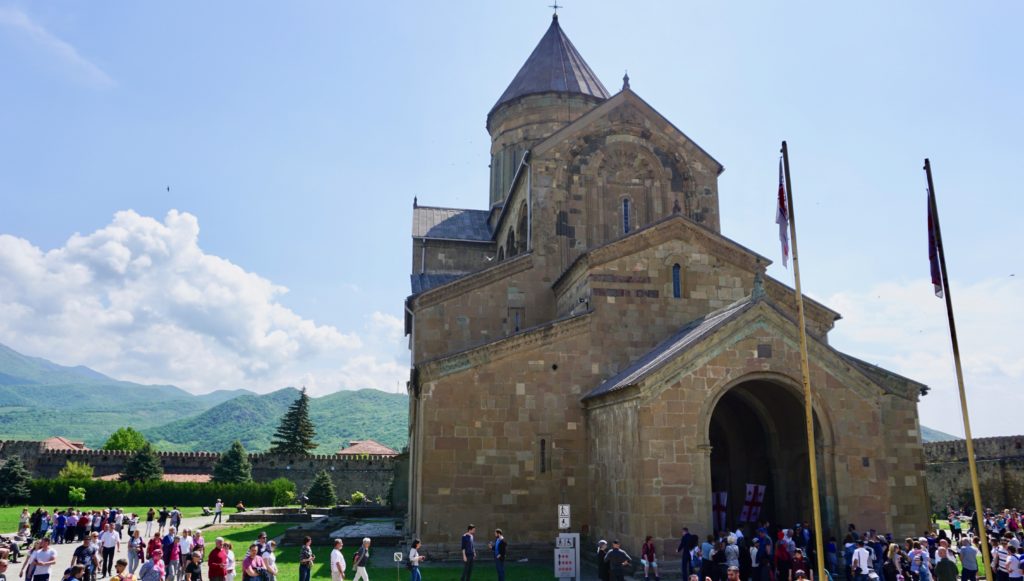
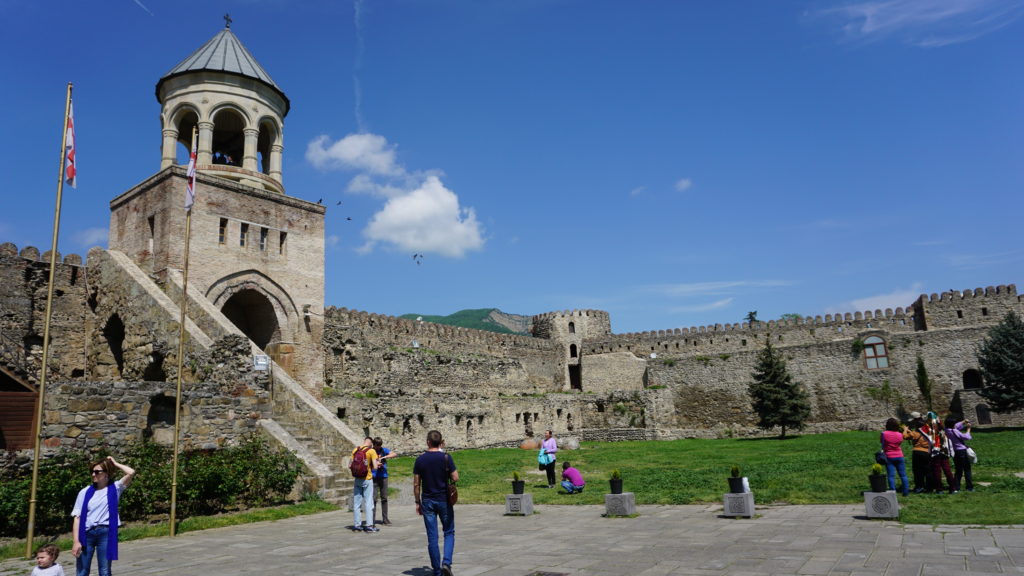
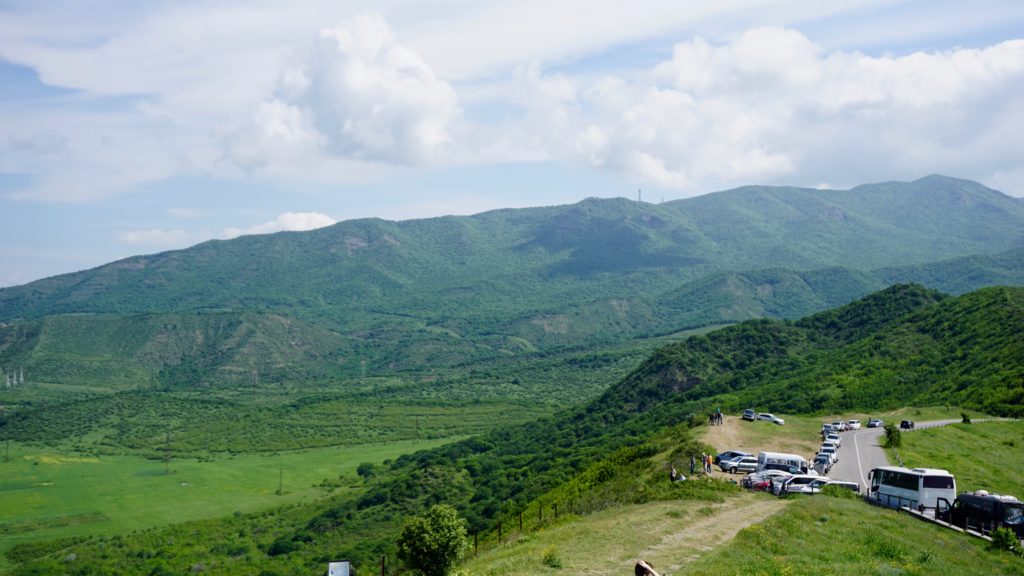
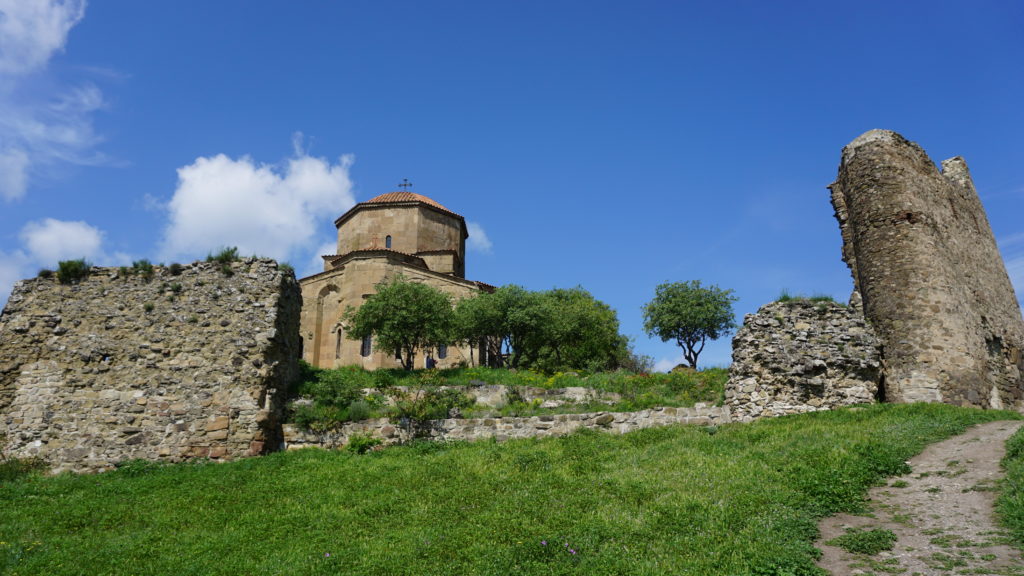
Georgia Today
While only independent since 1991, Georgian families have for centuries gone to great lengths to preserve traditional winemaking in their home cellars. Whether it was outlawed, or they were forced to grow few, high yielding grapes for sweet wines, they continued to make their own wine for family consumption. Today, this eight thousand year heritage is proudly displayed across countless aspects of society. Walking around Tbilisi you quickly notice the sheer importance the grape vine has in society.
Grapes adorn park benches, light posts, address markers and are most importantly prominent symbols inside centuries old churches. Strings of walnuts dipped in thickened grape juice are beautifully displayed by sidewalk vendors selling their traditional Georgian snacks. Chacha, a distilled spirit from grape skins is also sold and ubiquitous in family cellars throughout the country. Local cheeses are marinated in Saperavi red wine and offered alongside your glass. Wine festivals are celebrated every Spring and Fall, paying homage to the nation’s most prized and sacred product.
One increasingly important wine festival is that of Zero Compromise, held annually in May in Tbilisi. This small fair exclusively focused on natural, organic wines from boutique producers is gaining international notoriety and acclaim with every new year. Run by the Natural Wine Association of Georgia, it showcases members’ hard work and dedication to reviving ancient varietals and traditions abandoned by industrial winemakers. This year, Josko Gravner from Friuli, Italy was invited as a guest of honor. He was thanked for his tremendous contribution to the global natural wine effort and specifically for putting quality amber and qvevri wines on the map. Other notable guests included Raw Wine Fair founder, Isabelle Legeron MW. Her natural wine fairs have been helping small producers gain recognition and export partners around the world. In addition, she draws much needed attention to the environmental and health impact of low intervention wines as compared to conventional wines. I had the pleasure of attending Raw Wine Berlin, which you can read about here.
Much of the revitalization of traditional qvevri and dry winemaking can be traced to the 2006 sanctions with Russia. Georgia found itself unable to export mass quantities of bulk, sweet wine to Russia and was thereby forced to appeal to a different market. This market was that of Western Europe and the U.S. Fortunately, savvy foreign wine importers caught wind of the new quality coming from these small family producers, and demand quickly accelerated. Now, small, organic family winemakers are part of large and small festivals throughout Georgia and across the world. I had the fortune of attending both Zero Compromise and the New Wine Festival in Tbilisi in 2019, and was extremely impressed by the diversity and caliber of wines I tasted.
To get a true feel and taste of Georgian winemaking, I highly suggest taking a tour to one of Georgia’s wine regions. I had the pleasure of exploring Kartli with Trails and Wines, and could not recommend the experience more! Based in Tbilisi, Daria Kholodilina and her partner run excellent small wine and culture tours around Tbilisi. I partook in a full day culture and natural wine tour, visiting numerous sites, cellars and having a great Georgian Supra or lunch. I met incredible people and learned a ton about Georgian wine history and culture. Daria also co-wrote an excellent wine book you should definitely check out, Georgia: A Guide To The Cradle of Wine.
While natural wine is experiencing a prosperous resurgence, Georgia’s contentious political situation is headed in the wrong direction. In 2017, a new Constitution was introduced in an effort to create a European Parliamentary Democracy and supposedly guarantee EU and Nato alignment. Unfortunately, many of these new policies are however, very controversial, stripping much away from the Georgian people.
One drastic change is that starting in 2025, the President will be elected by a council of lawmakers, no longer through a direct election by the people. Also disappointing, marriage will now be defined as the “union between a man and a woman”. This change is a large step backward from the current definition stating that “marriage shall be based upon equality of rights and free will of spouses”, without mention of gender. Lastly and particularly important for the wine industry, foreigners will now no longer be able to buy agricultural land in Georgia. We will have to stay tuned to see how this impacts the growth of the Georgian natural wine market.
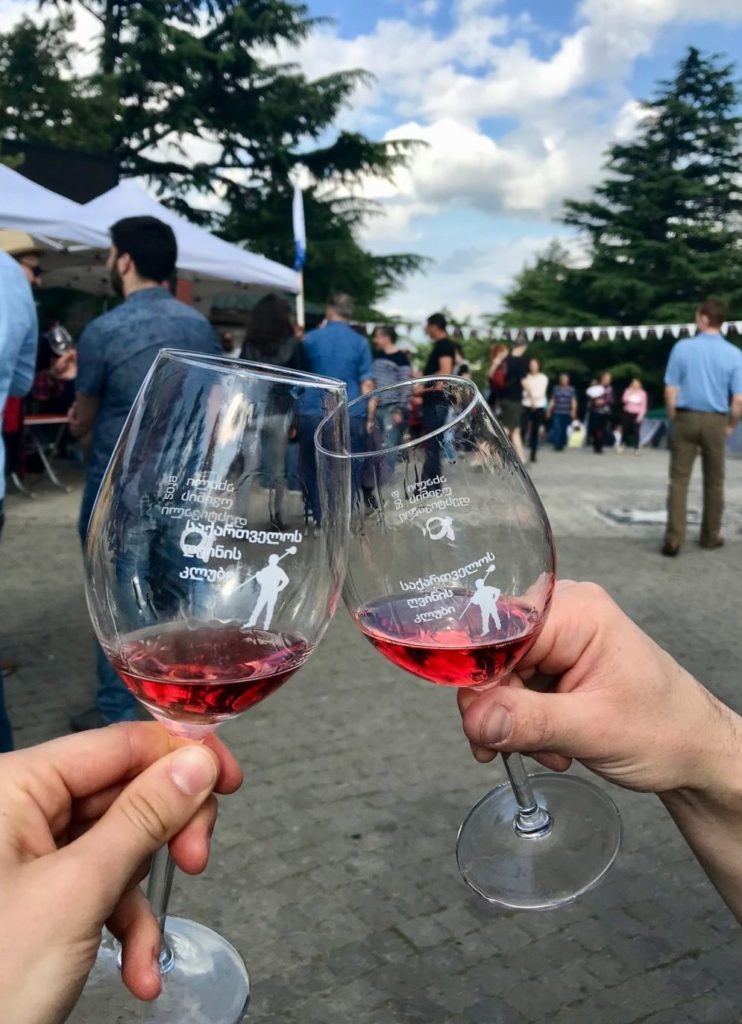
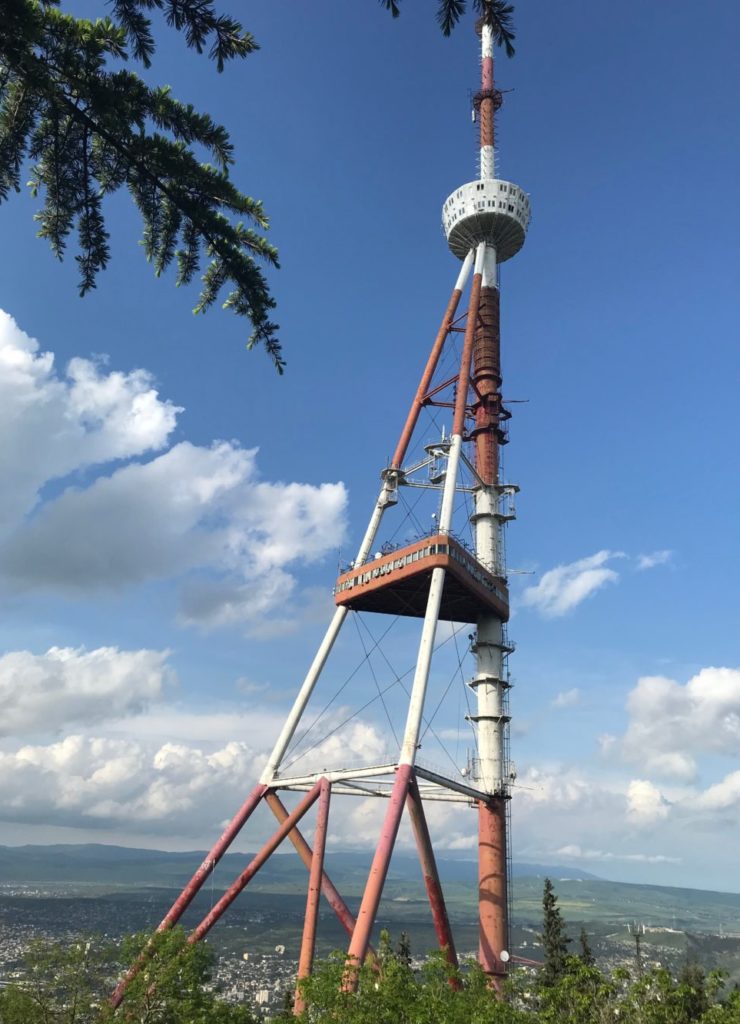
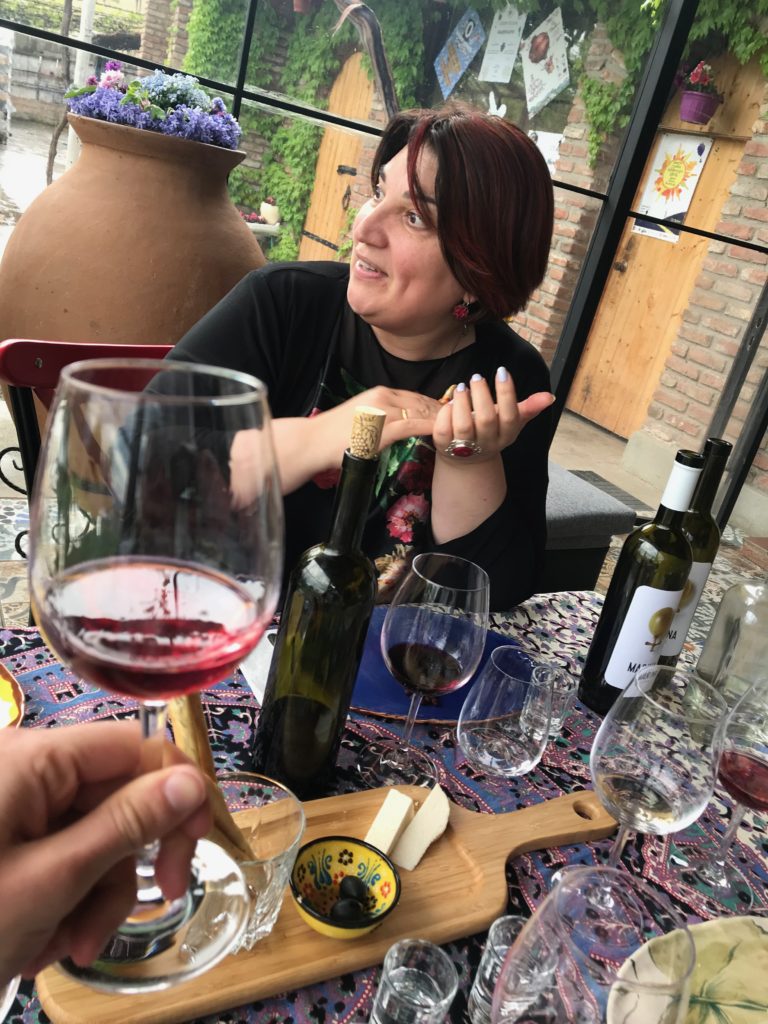
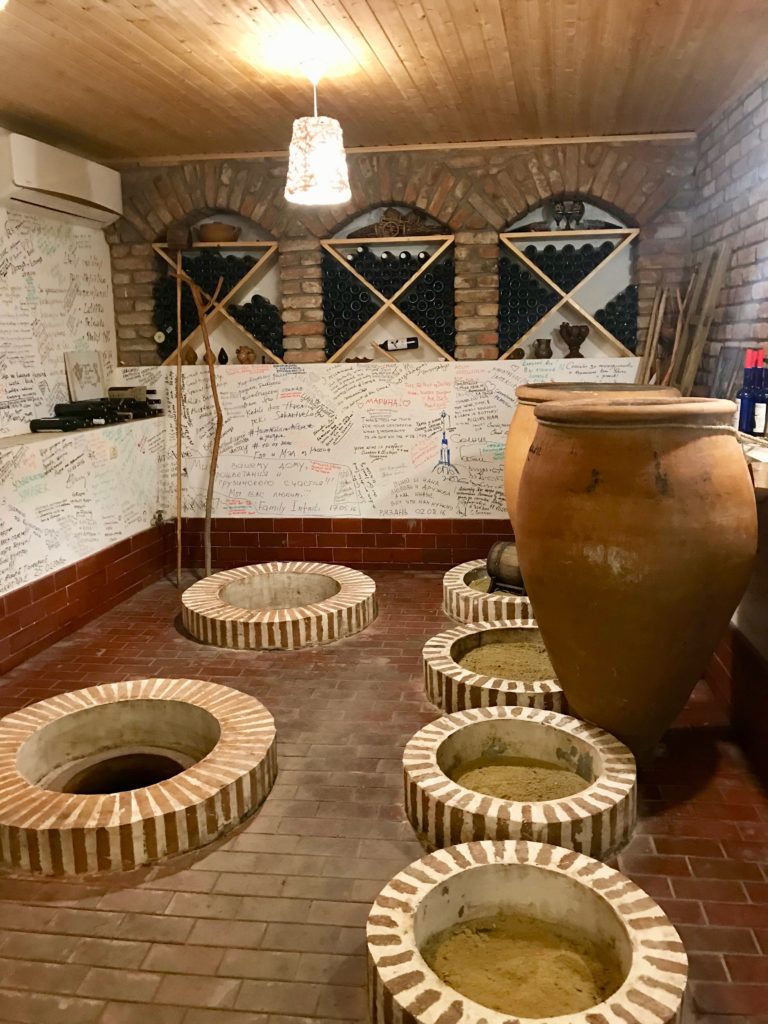
White & Amber Wines
Rkatsiteli
The most widely planted white, made in a variety of styles and vessels. In eastern Georgia it’s more common to be made with long macerations, while in the west it can be much lighter in body with no skin contact. Resistant to phylloxera it can thrive in many climates, but needs some coercing to achieve complexity on its own. High acidity keeps it fresh with subdued, sometimes tart fruit notes.
Kisi
Often blended with Rkatsiteli, Kisi has potential on its own as a crisp yet medium bodied white with or without maceration. Noticeable apple notes are apparent on the nose and palette.
Tsitska
Used in both semi-sweet and dry wines, Tsitska is a refreshing wine with nuttiness and enough acidity to make great sparkling wines. Most often found in western Georgia, especially Imereti.
Tsolikouri
Krakhuna
One of the more robust whites, Krakhuna has enough structure and alcohol to develop and age. A round finish is completed by balancing and lively citrus. Highly aromatic, it can also sometimes come across waxy.
Chinuri
Another age-worthy white is Chinuri from the Kartli region. This high acid, well structured grape creates layers of ripe stone fruit co-mingling with salty minerality.
Mtsvane
Meaning green, clones of this grape are grown throughout Georgia, often with the village preceding the varietal name (Goruli or Kakhuri). A medium body with stone fruit character, ash and smoke on the finish. Evident tannins and higher acidity can create quite complex single varietal wines.
Rose & Red Wines
Khidastauri
One of the most interesting wines I discovered in Georgia. This intense rosé is named for the town for which it originated, Khidastauri in the Kartli region. This wine is made from the pressed-off (without skins) Chinuri white grape juice, co-fermented with the red skins of Tavkveri. The two co-ferment in the proportion of 85/15%, juice to skin ratio. Maceration lasts for 6 months, resulting in a magenta wine, representative of the unique, vibrant people and country of Georgia.
Chkhaveri
Technically a gray grape (like pinot grigio), the skin color leans more red than white. Likely the most versatile Georgian grape I tried, it can be made into white wine, rose and elegant red wines. It has a layered and rich mouthfeel, thanks to its very long maturation period on the vine. Said to be from the west coast, Zurab Topuridze is making great single varietals and blends with Chkaveri. It can be fruity, herbal and salty all at once, it’s a very intriguing and noteworthy grape.
Saperavi
Saperavi is the big, dark king of reds in Georgia. One of the few wines with pink juice, not imparted by the skins, but natural to the grape. The tannins are abundant and often times harsh when over-macerated or realized too young. When grown in cooler, higher altitudes it can maintain a fresh acidity to offset the intense tannins, but bottles vary greatly by producer.
Jgaia
Perhaps the most interesting reds, akin to the complexity of Nerello Mascalese from Mt. Etna in Sicily. Thinner skins make way for red fruit and more delicate aromas to shine through. The color is reminiscent of Pinot Noir, with a subtle, slightly waxy texture to match.
Tavkveri
Medium bodied and acidic, used for still reds and sparkling reds, it has great potential. It’s an aromatic, late ripening grape with unique character. It’s also only female and therefore must be planted near another varietal, namely Chinuri for reproduction.
Shavkapito
A rare varietal producing dark fruit and earthy, tobacco flavors. Its high acid keeps it energetic, when not competing with bitter tannins that can compete. A multifaceted red to seek out.
Top Organic Georgian Wines
Georgia has an abundance of fresh vegetables, local cheeses, meats and delicious breads to satisfy hunger of any type. Cuisine changes from region to region, but here are a few staples I highly recommend below.
